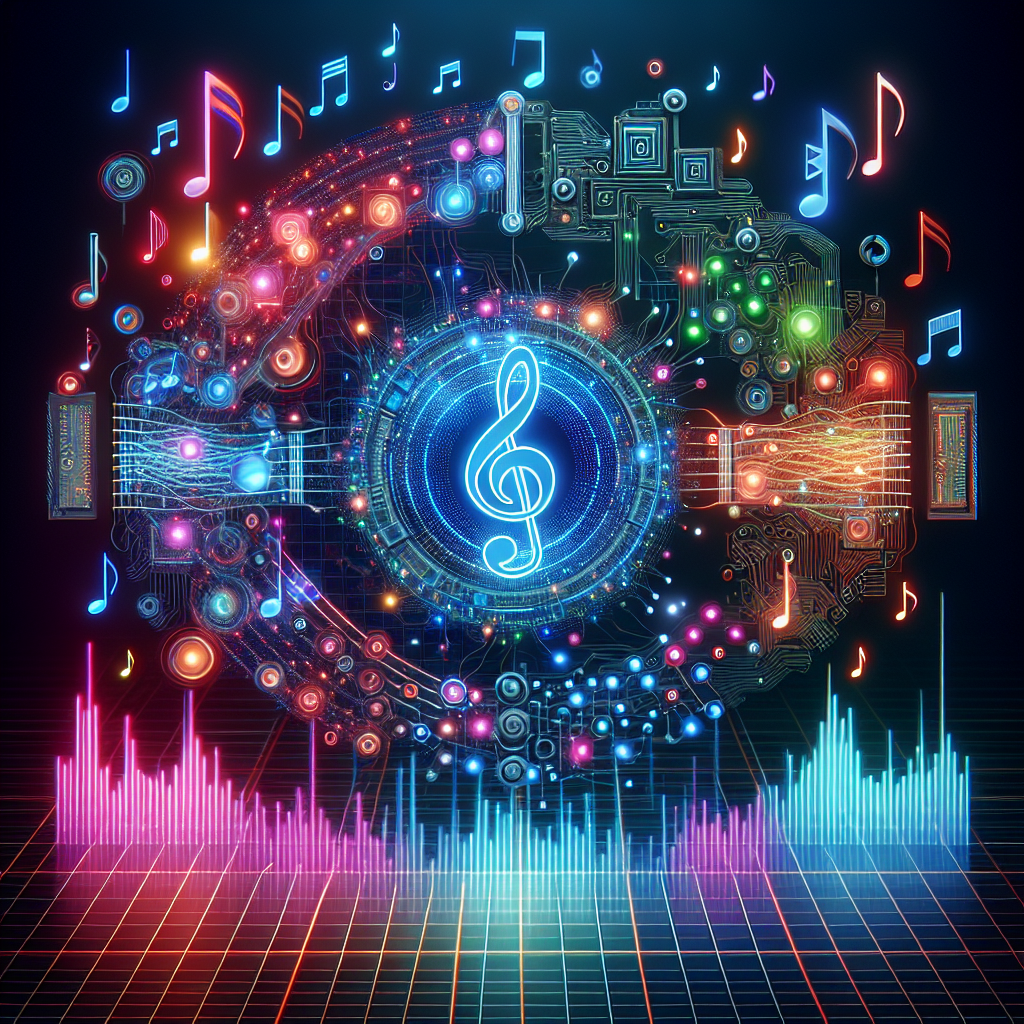Revolutionizing Music: AI-Generated Art in Visualizations

Introduction to AI in the Music Industry
The music industry has always been at the forefront of technological advancements, from the invention of the phonograph to the rise of streaming services. Today, Artificial Intelligence (AI) is making its mark, not only in music production and recommendation systems but also in creating stunning visualizations that accompany musical pieces. These AI-generated visuals are revolutionizing how we experience music, adding a new dimension to auditory art by providing a visual feast that transcends traditional boundaries.
The Intersection of Music and Visual Art
Music and visual art have always shared a symbiotic relationship. Album covers, music videos, and live concert visuals all enhance the auditory experience, creating a more immersive and memorable interaction with the music. With the advent of AI, this relationship is evolving. AI-generated art is capable of creating dynamic, real-time visualizations that respond to the nuances of music, offering a unique, personalized experience for each listener.
How AI-Generated Art Works
AI-generated art in music visualization utilizes machine learning algorithms to analyze and interpret audio data. These algorithms can detect changes in tempo, rhythm, and mood, then generate corresponding visuals. For instance, a fast-paced section of a song might trigger vibrant, rapidly changing patterns, while a slow, melancholic piece might produce soothing, flowing imagery. This process involves several key technologies:
Deep Learning and Neural Networks
Deep learning, a subset of machine learning, employs neural networks to mimic the human brain’s functioning. In music visualization, these networks are trained on vast datasets of audio and visual art to understand and replicate the nuances of both forms. They learn to associate specific musical elements with visual styles, enabling the generation of art that reflects the music’s essence.
Generative Adversarial Networks (GANs)
GANs are particularly effective in creating AI-generated art. They consist of two neural networks: a generator, which creates images, and a discriminator, which evaluates them. Through a process of trial and error, the generator improves its output, resulting in highly detailed and intricate visuals that can transform according to the music’s dynamics.
Style Transfer and Real-Time Processing
Style transfer is another technique used in AI-generated art, allowing the application of specific artistic styles to visuals. When combined with real-time processing, AI can modify these styles on-the-fly, adapting to the live performance of music. This capability opens up new possibilities for live events, where each show can offer a unique visual experience.
Applications of AI-Generated Visuals in Music
The integration of AI-generated art in music is not limited to a single application. It spans various aspects of the industry, from live performances to personal listening experiences, enhancing the way we engage with music.
Live Concerts and Events
In live concerts, AI-generated visuals can create an immersive atmosphere that complements the music. Artists can work with AI to design visuals that evolve with each song, providing audiences with a unique experience every time. These visuals can be projected onto large screens or integrated into stage designs, transforming concerts into multi-sensory spectacles.
Music Videos and Online Content
AI-generated art is also making waves in music videos and online content. Musicians and directors can collaborate with AI to produce visually stunning videos that are constantly evolving. These videos can react to the music in real time, offering viewers an engaging and unpredictable visual journey that elevates the song’s narrative.
Personalized Listening Experiences
On a more personal level, AI-generated art can enhance individual listening experiences. Streaming platforms and music apps can integrate AI to offer users personalized visualizations that adapt to their favorite tracks. This level of customization allows listeners to connect with music on a deeper level, as the visuals reflect their personal taste and emotional response to the music.
The Impact and Future of AI-Generated Art in Music
As AI continues to evolve, its impact on music visualization is expected to grow exponentially. The integration of AI-generated art in music has the potential to redefine the industry, offering new opportunities for creativity and expression.
Democratizing Art and Creativity
AI-generated art democratizes the process of creating visual content, allowing artists and musicians of all backgrounds and skill levels to experiment with new forms of expression. This democratization fosters innovation and diversity, as more artists can explore the possibilities of combining music and visual art without the need for extensive technical knowledge.
Challenges and Ethical Considerations
Despite its potential, the use of AI in art raises important ethical considerations. The question of authorship and originality becomes more complex when machines are involved in the creative process. Furthermore, the reliance on algorithms to generate art may lead to concerns about the loss of human touch and the homogenization of visual styles. It is crucial for artists, developers, and industry leaders to address these challenges thoughtfully, ensuring that AI-generated art enhances human creativity rather than replacing it.
The Future of Music and AI
Looking ahead, the future of music and AI-generated art holds exciting possibilities. As technology advances, we can expect even more sophisticated algorithms capable of understanding and replicating the subtleties of human creativity. This progress may lead to the development of entirely new art forms, where music and visuals are intertwined in ways we have yet to imagine.
Conclusion
The integration of AI-generated art in music visualizations represents a significant leap forward in how we experience and interact with music. By bridging the gap between auditory and visual art, AI offers a richer, more immersive experience that resonates with audiences on multiple levels. As we continue to explore the potential of AI in the music industry, it is essential to embrace the opportunities it presents while remaining mindful of the challenges and ethical considerations. In doing so, we can ensure that AI-generated art serves as a powerful tool for creativity and expression, revolutionizing the music industry for years to come.



